Cycladic Society 5000 years ago
ARCHAEOLOGICAL EXHIBITION
DECEMBER 8 2016 - APRIL 9 2017
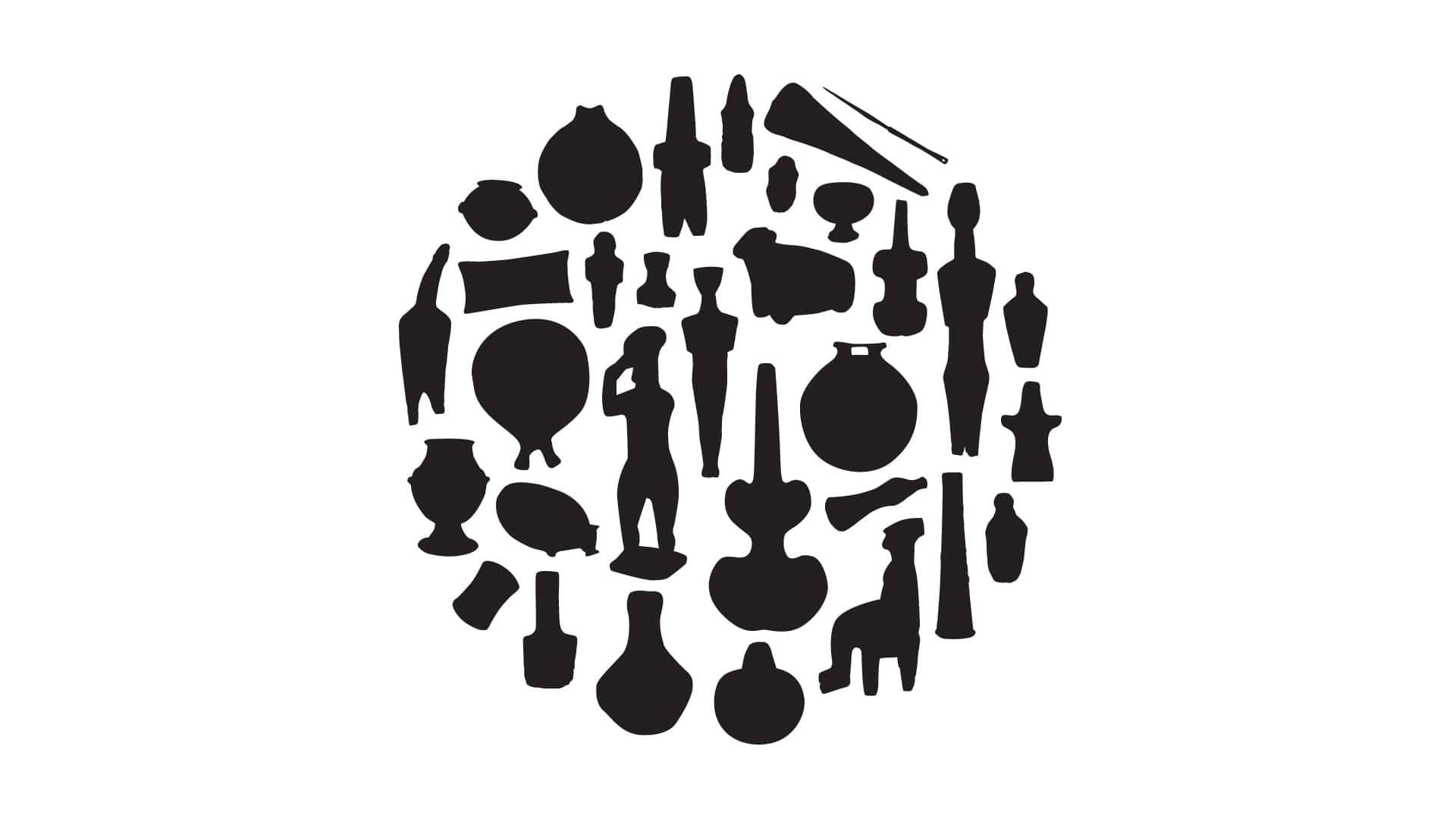
THE CYCLADES
The Cyclades, a closely packed insular complex in the central and south Aegean Sea, comprises 35 large islands and numerous smaller ones. Ancient Greek writers, who imagined that the islands formed a circle around Delos, Apollo’s sacred island, called them the “Cyclades.”
In the Early Bronze Age, the Cyclades were the cradle of the important “Early Cycladic” culture, which spans from approximately 3200 to 2000 BC and is divided into three sub-periods: Early Cycladic I (ca. 3200-2700 BC), Early Cycladic II (ca. 2700-2300 BC), and Early Cycladic III (ca. 2300-2000 BC). These three sub-periods alternate with two transitional periods: the Early Cycladic I to Early Cycladic II transition, or “Kampos phase”, and the Early Cycladic II to Early Cycladic III transition, or “Kastri phase”.
THE CYCLADIC CIVILIZATION
During Early Cycladic culture’s acme in the Early Cycladic II period, settlements of various sizes multiplied on small promontories or low hills. Some were fortified, like the acropolis at Kastri in Syros and Panormos in Naxos. Urban planning adapted to the terrain, and structures were stone-built, usually with one, two, or three rooms and outdoor spaces. This period’s largest settlement is at Skarkos on Ios, with an area of 11,000 km2 and an urban plan comprising streets, single and two-storied houses with stone-built staircases, and drainage pipes. Towards the end of the Early Cycladic II period, disputes over the control of metal sources and related commercial networks in the Aegean may account for unrest and upheaval, with evidence for population movements. As a result, many settlements were abandoned temporarily, and others were conquered by enemy forces. At the same time, new settlements protected by strong fortifications were established in remote areas.
The limited evidence for settlements in the Early Cycladic III period comes mainly from the town of Phylakopi I on Melos, which suggests that these were probably considerably larger than before, with urban planning and small, well-built houses.
Cemeteries were usually located on coastal slopes near their associated settlements. The earliest cemeteries consisted of small cist graves containing a single inhumation in a foetal position. In Early Cycladic II, cemeteries increased in size indicating an increase in population. Cist graves were used for consecutive inhumations of members of the same family. A characteristic example is the cemetery at Chalandriani in Syros, which comprised more than 600 tombs, most of which contained more than one inhumations. Early Cycladic III tombs are primarily underground, rock-hewn chambers intended for consecutive multiple burials.
Our knowledge concerning this culture comes from settlements and, especially, cemeteries. Our knowledge of Early Cycladic I settlements is very limited, either because the houses were made of perishable materials or because the number of excavated sites is very small. At least one settlement, at Markiani, Amorgos, appears to have been fortified on its accessible side.
ACTIVITIES, ARTS & TECHNIQUES
SPINNING & WEAVING
Farming provided the Early Cycladic islanders not only with foodstuffs but also with raw materials, such as the leather and the wool they used to make textiles.
Clay spindle whorls and sewing needles indicate that spinning and weaving were common household activities, and basketry imprints on the bases of several clay vases indicate the practice of basket weaving
We know that Cycladic sculpture used colour extensively, and that Cycladic figurines were originally painted. Some figurines preserve traces of pigments. Others show smooth areas that appear to have been in relief but were originally painted and thus protected from the erosion that affected the rest of the surface.
All pigments mineral: red was produced from hematite, red ochre, or cinnabar; dark blue from azurite, green from malachite or azurite hydroxide. Traces of red colour on grinding stones and marble bowls suggest that these vessels were used for grinding pigments into powder. Rectangular trays with traces of colour, found together with grinding stones, probably served as palettes for grinding or mixing pigments. Traces of a dark blue pigment inside pyxides, small aryballoid vases, bone cylinders, and seashells indicate that these were used for storing pigments.
POTTERY & SHIPBUILDING
Pottery
Pottery making was one of the islanders’ principal activities in the third millennium BC. Clay vases were used as tableware, for household tasks, for storing and transporting foodstuffs, as jewellery boxes, ritual vessels, and grave gifts, hence their importance as sources of information on various aspects of daily life, pottery technology, and the period’s aesthetics.
Most clay vases were handmade, since the use of the potter’s wheel was only introduced in approximately 2500 BC and came into general use at the end of the Early Bronze Age. Early Cycladic pottery comes in a great variety of forms. Pan-shaped vessels with intricate decoration on the exterior, bowls, and small kraters are characteristic forms. Pyxides in various shapes—cylindrical, spherical, ovoid, lentoid, and spool-shaped—were used for storing jewellery and cosmetics. The potters’ repertoire also included pear-shaped and aryballoid vases, kylikai drinking vessels included cups and kylikai(stemmed cups), “fruit bowls”, jugs, kymbai (sauceboats), and vases of eastern influence such as the two-handled tankard (depas amphikypelon) and two-handled cup. Composite (double, quadruple) and zoomorphic vases exhibit the Cycladic potters’ mastery.
Ceramic vases often feature incised decoration comprising rectilinear motifs filled with a white mineral (kaolin) pigment. These were later enriched with curvilinear motifs, such as spirals and concentric circles. Decoration impressed with wooden stamps was also introduced during this period, whereas coating vases with pigment led to the development of painted decoration with rectilinear and curvilinear motifs.
Shipbuilding
The introduction of copper technology, which led to the manufacture of more efficient tools, contributed to the development of shipbuilding. The miniature lead ships in the Ashmolean Museum, Oxford, the Cycladic boat representation in a rock carving from Naxos, and the incised representations of multi-oared ships on several pan-shaped vessels from Syros indicate that Cycladic craftsmen could build multi-oared ships long enough to sail both near and far.
As a consequence, the development of shipbuilding contributed to the intensification of navigation, the establishment of contacts with the outside world (mainland Greece, Aegean, Asia Minor, Near East and Balkans) and the development of trade.
MARBLE CARVING & REPAIRS
Marble carving
The abundance of marble in the Cyclades, particularly at Naxos and Keros, favoured the development of marble carving to create vases and figurines in the third millennium BC. Marble carving tools were made of stone and metal. Modern experiments, the archaeological remains of “workshops”, and unfinished artefacts provide evidence for the manufacturing techniques of vases and figurines.
Vase making comprised two main stages: carving the basic shape and finishing and polishing. The manufacture of closed vessels was a more demanding process, as it also required emptying the interior and creating holes and incised details. Marble vases came in a variety of forms. The small krater, also known as the “kandela” for its resemblance to modern Greek ecclesiastical lamps, is probably the most characteristic Early Cycladic shape. The conical tumbler is characteristic of the first phase of the Early Cycladic period. Bowls display a great variety a shapes: the shallow bowl with vertical pierced lug, the bowl with four horizontal rim lugs and the spouted bowl. The kylix is this period’s most common footed cup. Pyxides, whether spherical, cylindrical, or spool-shaped, are also common. There are also composite vessels, such as double vases, kernoi, the “dove vase”, as well as anthropomorphic and zoomorphic vessels.
Repairs
Traces of ancient repairs on vases and figurines are particularly interesting as they reveal both the value attributed to these objects and the period’s technical knowledge.
Broken vases and figurines were mended either by drilling holes on either side of the break and using leather or lead strips to hold the broken parts together, or by joining the broken pieces with lead clasps. Occasionally, broken objects were reworked, like a figurine now in the Museum of Cycladic Art, which had broken at the knees so these were reworked into feet.
MASTERS?
Marble figurines are undoubtedly Early Cycladic culture’s most characteristic and unusual creation. Only one marble carving workshop, at Skarkos in Ios, which yielded figurines and tools, has been identified so far. However, studies of how the figurines were made have led to the identification of individual craftsmen. These studies show that figurines were produced according to specific proportions and that, despite their standardization, some closely resemble others in the rendering of specific details, which characterize a number of artists or “masters”.
These “masters” are named conventionally for the museum (e.g. “Naxos Museum Master”) or collection (e.g. “Goulandris Master”) that houses their most characteristic work or the archaeologist who discovered it (e.g. “Doumas Master”). Figurines by the “Goulandris Master”, the most prolific sculptor of the Early Cycladic II period, have solid shapes, a lyre-shaped head with painted decoration, and a short neck. The “Naxos Museum Master”, on the other hand, made figurines with a long face, narrow torso, curved shoulders, and breasts set high on the torso.
Some scholars, however, question the existence of certain “masters” and attribute the similarity between figurines either to the prevalent canon of proportions or to local workshops.
FIGURINES
Experiments showed that the making of figurines comprised four stages: tracing the figurine’s shape on the marble block, “roughing it out”, finishing the figurine, and, finally, engraving the details, polishing, and, occasionally, adding painted decoration. Although most Cycladic figurines are made of marble, figurines also exist in limestone, black stone and metal.
Cycladic figurines are divided into two main groups: schematic and naturalistic. Most represent women, but male figurines also exist. Βoth categories coexist throughout this period as two different manners of expression.
Starting from the abstract rendering of the human outline followed by a period of intense experimentation, Cycladic sculptors created the most characteristic figurines of Cycladic civilization at its peak, the so-called “Canonical Folded Arms Figurines”. These primarily naked female figurines have standardized features: the head is tilted back, the arms are folded under the chest in the “canonical” order (left over right), and the feet are pointed downward. Basic facial features and anatomical details of the sex organs are denoted. Certain features, such as the eyes, eyebrows, and hair, are occasionally painted. This standardization lasts for approximately five centuries and ends at the end of the period, when these “canons” are no longer observed and the figurines’ features are rendered in a careless manner. At the end of the Early Cycladic period, sculptors display a preference for schematic figurines characterized by solid volumes for the body and a complete lack of anatomical features.
We know that Cycladic sculpture used colour extensively, and that Cycladic figurines were originally painted. Deep blue or black pigment was used for the hair, eyebrows, eyes, and pubic triangle, whereas red was used for the jewellery and decorative motifs on the face and body.
The absence of written sources, combined with the fact that most Cycladic figurines were not found during systematic excavations, hinders their interpretation. A number of hypotheses concerning their function have been put forward. Some scholars interpret Cycladic figurines as representations of deities associated with fertility, or the Mother Goddess, who rules over the cycle of life and death, or even chthonic deities, psychopomps, or apotropaic mythological beings. Others liken the figurines to images of humans, possibly concubines in the service of the deceased, children’s dolls, images of ancestors, or symbols of prestige. Their discovery in settlements and tombs alike suggests that they served both as ritual objects in daily life and as grave gifts.
SOCIAL LIFE
Some of the most interesting Cycladic figurines represent men and women playing musical instruments, drinking, holding each other, or simply sitting, sometimes cross-legged, as if witnessing some event. The “harpist” and “flutist” figurines provide evidence of both musical instruments and music as entertainment in the third millennium BC.
Although we do not know what Cycladic music sounded like, it probably played an important role in social gatherings; after all, music is still associated with drinking and dancing. The “cup bearer” indicates that social drinking was probably practiced in the third millennium BC, whereas the pecked representation of three human figures in what appears to be dancing attitudes suggests that music and dance might be connected with daily or ritual events.
SOCIAL HIERARCHY
Social Stratification in the Cyclades
Although the absence of written sources makes it difficult to detect social stratification in the Cyclades during the third millennium BC, settlement and cemetery layout provides valuable insights into the period’s social organization. The careful construction of certain tombs, their location within the cemeteries, and the grave goods they contained all provide evidence for social stratification.
The two diadems from Syros and Amorgos were undoubtedly power emblems, which may indicate the existence of power. Prestige objects, such as jewellery, objects made of precious metals, or the rare silver-plated bronze dagger, suggest the existence of a higher social class. Lastly, carved seals provide evidence both for a well-organized financial exchange system and for the existence of persons with authority. The simple four-legged stools and elaborate thrones associated with seated figurines are valuable indications of social hierarchy within the household or community.
Towards the end of the Early Cycladic period, when unrest spread throughout the Aegean, a new type of male figurine appeared, one bearing a baldric and, occasionally, an incised dagger. Identified as a hunter or warrior, this figurine type may reflect the existence of actual warriors during this period of strife. Either way, its features indicate a different status from that of other Early Cycladic figurines.
FAITHS & BELIEFS
The Cycladic islanders’ religious beliefs and cult practices in the third millennium BC are difficult to detect without written sources. Unlike the settlements, however, cemeteries are a valuable source of information.
The study of burial customs and grave goods shows that the islanders respected the deceased and believed that their essence continued after death.
The Cycladic islanders’ religious beliefs
The fact that the deceased were buried with their belongings indicates a belief in the afterlife. Noteworthy is the “killed” dagger from Ano Koufonisi, which was deliberately folded before being deposited in the grave to prevent further use by the living, thereby only serving the deceased in the afterlife.
The placement of the deceased’s head on a small plaque as if on a pillow or the preservation of the skull inside the tomb after the rest of the bones were disposed of indicates a belief in the afterlife. Ritual vases and fragments of objects deposited in tombs suggest some funerary or religious ritual. In the cemetery at Agioi Anargyroi in Naxos, a large stone-built platform with numerous “hat-shaped” vases with no apparent practical use is interpreted as a place where rituals in honour of the deceased took place.
Presumed ritual vessels include kernoi, zoomorphic vases, the “dove vase”, and pan-shaped vessels. Interestingly, pan-shaped vessels feature an engraved pubic triangle above the handle. The representation of the pubic triangle on pan-shaped vessels, as on figurines, is taken as a religious symbol associated with female fertility and the cult of the Great Goddess.
Religious buildings have been tentatively identified in two Cycladic sites. An ovoid building excavated on the hill at Korfi t’Aroniou, Naxos may have functioned as a small shrine. Near this were ten plaques interpreted as religious objects with representations of the islanders’ daily activities. The discovery throughout Naxos of similar plaques with decorative spirals and pecked depressions identified as solar or astral symbols may support this interpretation.
Kavos is another site with a possible religious function on the uninhabited islet of Keros, between Naxos and Amorgos. A large group of fragmentary Early Cycladic figurines of unknown provenance, conventionally dubbed “Keros Hoard”, appeared on the antiquities market in the 1950s. The group remained a mystery until systematic excavations at Kavos revealed large deposits of broken figurines and vases. The comparative study of the excavated finds and the objects in the enigmatic “Keros Hoard” showed that certain fragments in the two groups join, demonstrating that the “Keros Hoard” originally came from here. The site’s numerous deposits of artefacts that had been intentionally smashed in antiquity and rarely join suggests that Kavos was a place of ritual smashing and deposition of objects of symbolic function.
In their search for Cycladic deities, scholars turned to the anthropomorphic figurines. Some maintain that figurines represent gods, others that they represent mortals. The unique female figurine with a snake’s head and marked pubic triangle represents a hybrid creature with human and “demonic” characteristics, probably with apotropaic properties. Either way, the standardization of figurines and highlighting of characteristics relating to female fertility may indicate the islanders’ religious beliefs and faith in the idea of rebirth.
As for the large statues, these are considered cult objects for use in sanctuaries. The rare male statues, like the one in the Museum of Cycladic Art, are thought to represent a male deity associated to the more powerful female deity.
VIDEO POEM
The Director of the Museum of Cycladic Art, Professor N. Chr. Stampolidis narrates the rise of the Early Cycladic society (3200 to 2000 B.C.) and its civilization through the prism of the cycladic figurune, the symbol that defined globally the history of Art from the Prehistoric Age up until the 21st century because of its clean form and iconic simplicity.
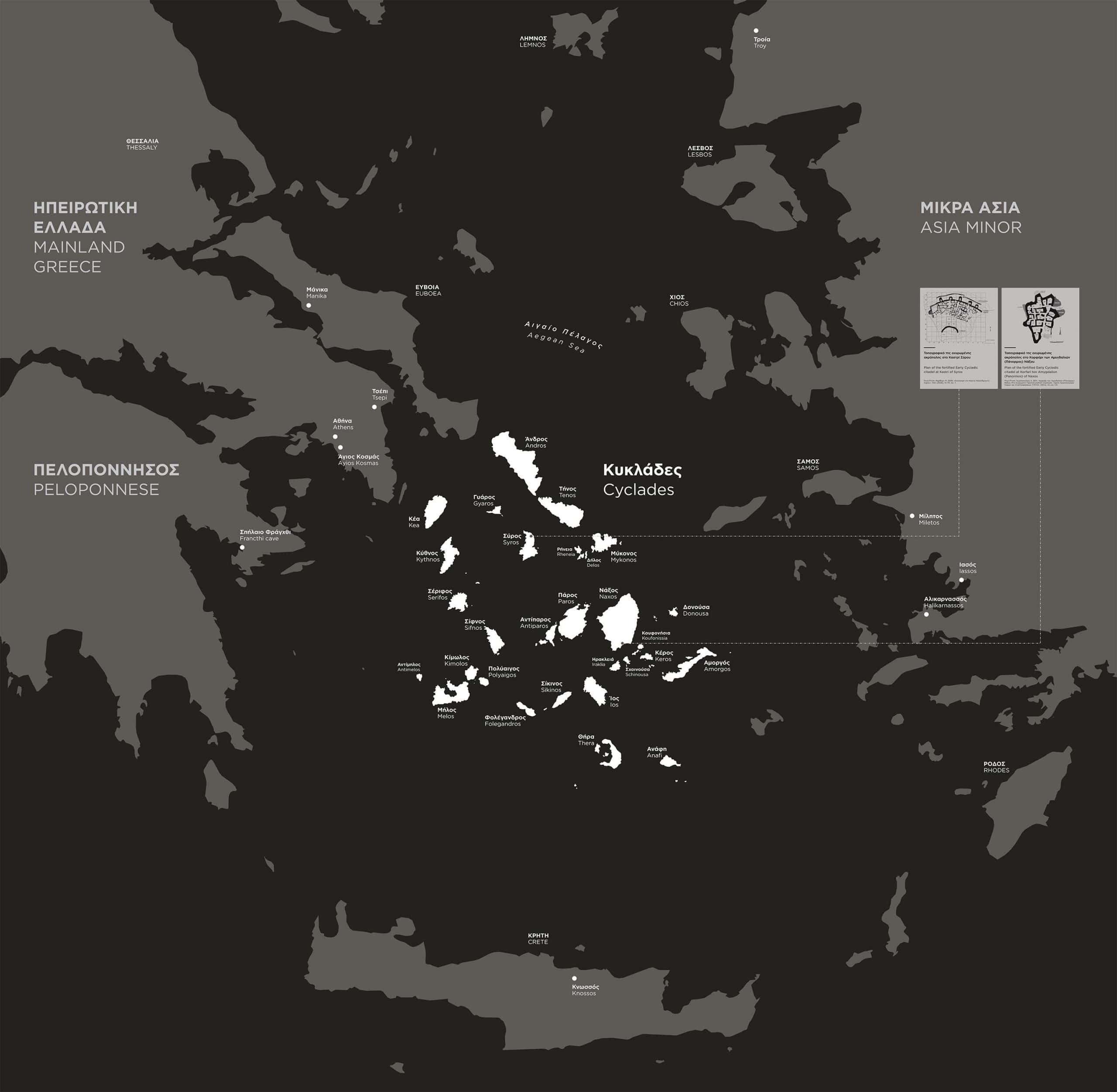
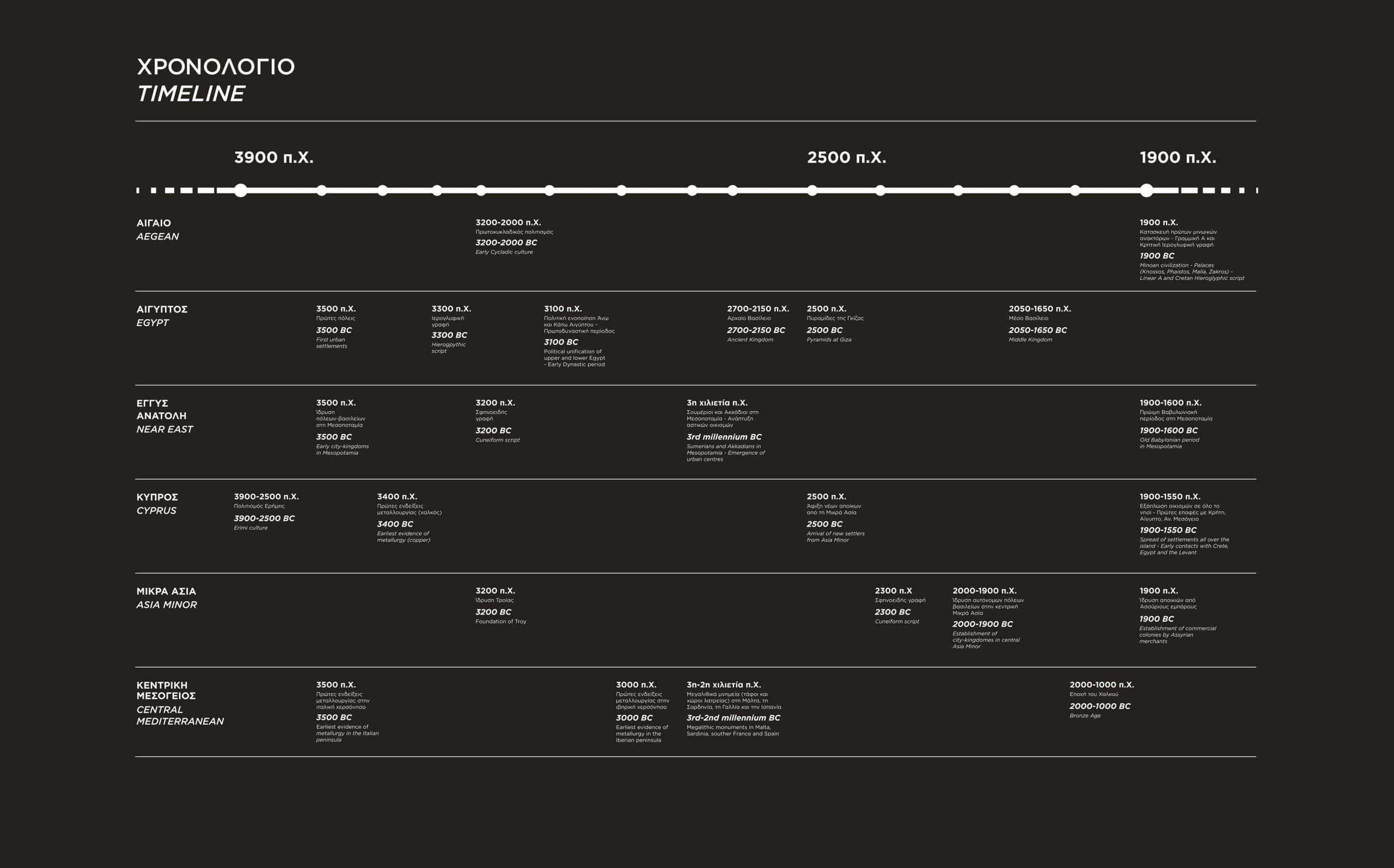
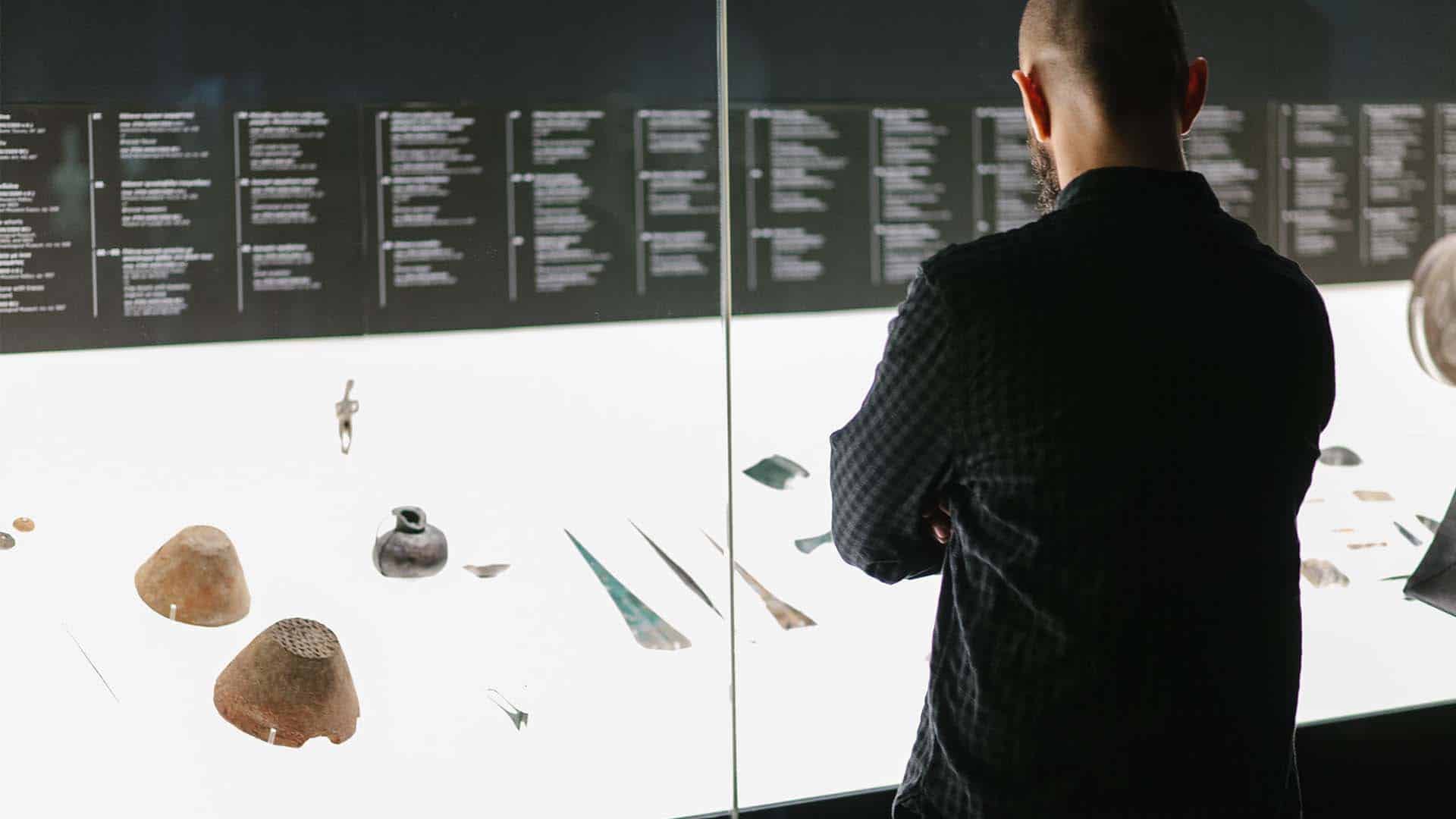
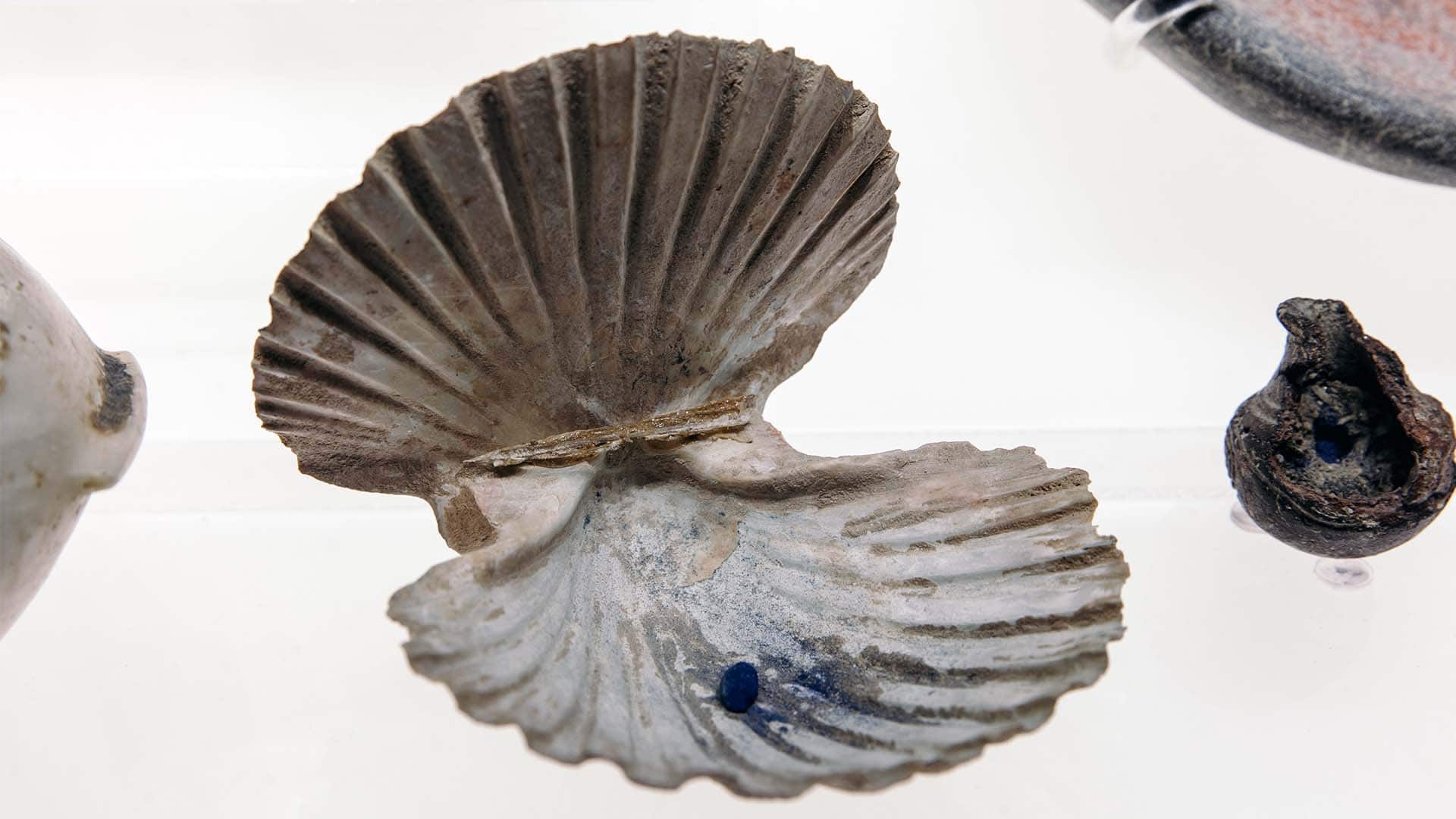

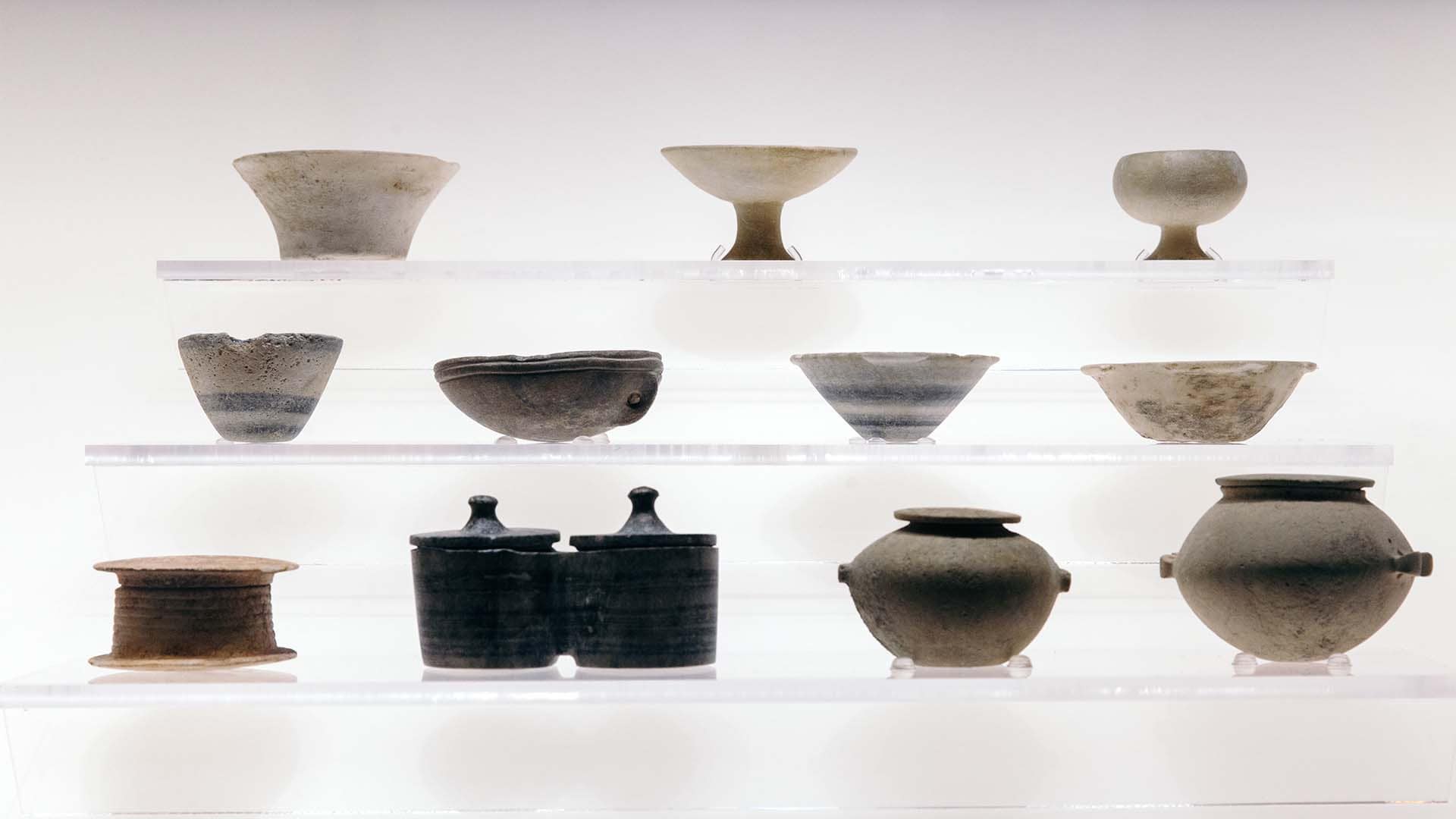

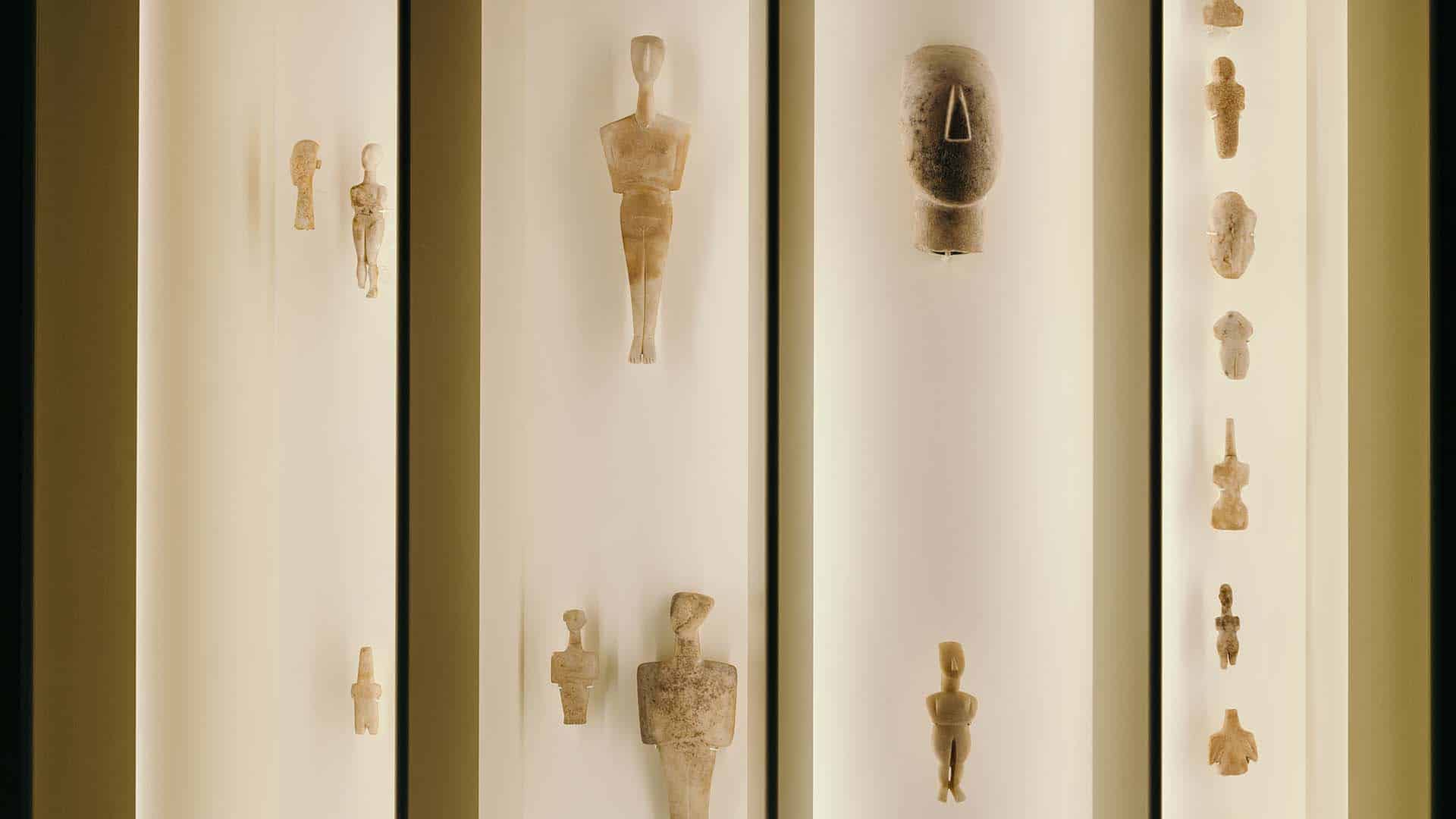
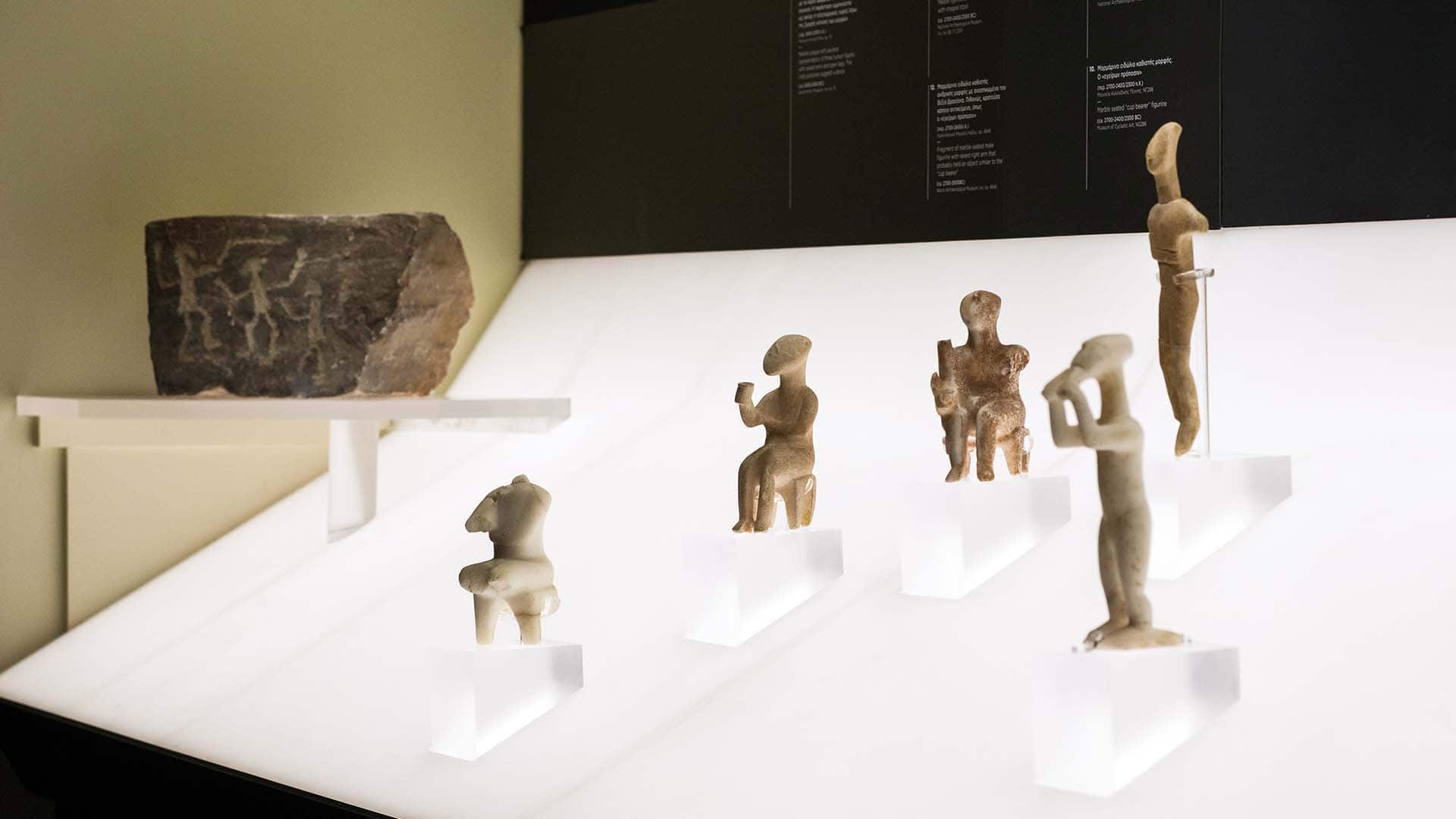
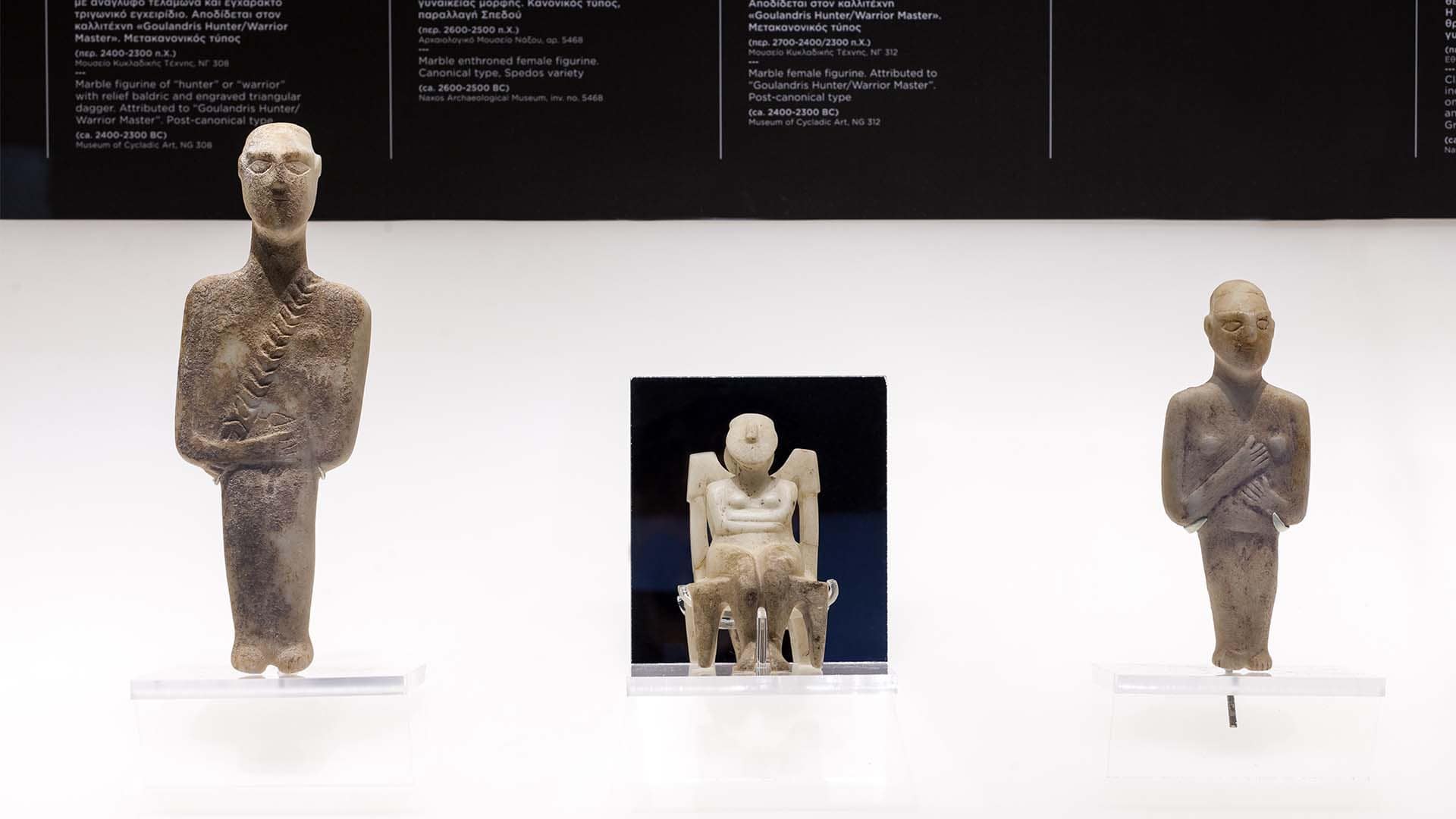

SOCIAL FOCUS
Early Cycladic culture has its roots in the Cycladic islands’ Neolithic past. Early Cycladic art developed within this tradition, hence its markedly anthropocentric character. In the Early Bronze Age Cyclades, the individual emerges as the society’s basic and dominant focus. Man and woman, whose union produces the family, were the cornerstone of Early Cycladic society, as reflected in this period’s anthropomorphic creations.
Neolithic representations of the human figure, particularly female, put an emphasis on its reproductive capacity. Standing and seated steatopygic female figurines, with their excessively large buttocks, are characteristic creations of the Neolithic period. These developed into the violin-shaped figurine, the most common Early Cycladic I type, a schematic rendering of the voluptuous Neolithic female figure, often with naturalistic details such as the breasts and pubic triangle, both characteristic of the female sex.
It is also interesting that most naturalistic figurines represent naked women, although some male figurines also occur. Interestingly some figurines represent pregnant women or women who have just given birth. The biological attribute of women to generate life was represented in a simple and clear way, giving a clear reference to fertility, reproduction, and motherhood. Double figurines further suggest that reproduction and regeneration were prevalent concepts in Early Cycladic society.
Finally, a unique fragmentary group comprising a large figurine holding a smaller one, identified as a “mother and child”, may indicate the role of the family as the nucleus of Early Cycladic society.